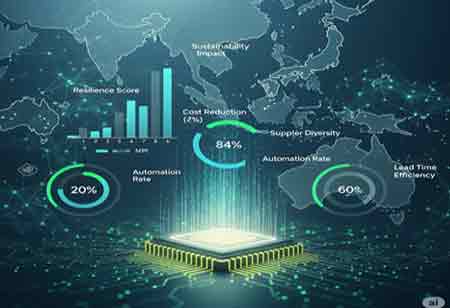THANK YOU FOR SUBSCRIBING
Procurement KPIs That Matter: Reframing Performance Measurement in APAC
The APAC region's procurement success requires innovative KPIs that go beyond cost savings, focusing on strategic value, risk, sustainability, and digital efficiency to drive a competitive advantage.

By
Apac CIOOutlook | Monday, August 11, 2025
Stay ahead of the industry with exclusive feature stories on the top companies, expert insights and the latest news delivered straight to your inbox. Subscribe today.
Fremont, CA: The Asia-Pacific (APAC) region is a powerhouse of global commerce, characterized by its rapid growth, diverse markets, and complex supply chains. For procurement teams operating in this environment, a traditional set of Key Performance Indicators (KPIs) often fails to meet expectations. While cost savings and on-time delivery remain fundamental, the accurate measure of procurement's success in APAC lies in a more nuanced and forward-thinking approach.
The Shift from Traditional to Strategic KPIs
For decades, procurement performance has primarily been assessed through a traditional trio of key metrics: cost savings, on-time delivery, and supplier performance. Cost savings, often viewed as the cornerstone of procurement success, measure reductions in expenditure against a predefined baseline. On-time delivery ensures that materials and goods arrive as scheduled to maintain operational continuity, while supplier performance evaluates the quality, reliability, and service levels provided by vendors. Although these metrics continue to serve as essential benchmarks, they no longer capture the full strategic potential of procurement, particularly within the region. Emerging KPIs now reflect a broader and more nuanced landscape shaped by geopolitical shifts, heightened sustainability mandates, and the growing urgency for digital transformation.
The New Pillars of Procurement Performance in APAC
KPIs that matter most today can be effectively categorized by the strategic value they measure, providing clear insight into the evolving role of procurement within organizations. Under Strategic Value and Innovation, metrics such as the Supplier Innovation & Collaboration Rate underscore the percentage of suppliers engaged in co-developing innovations, new products, or process improvements. This is particularly critical in the APAC region, where an ecosystem of agile suppliers positions procurement as a growth enabler rather than merely a cost-control function. Similarly, Spend Under Management (SUM) and Strategic Sourcing Coverage go beyond tracking expenditure—they indicate the proportion of addressable spend actively managed through strategic sourcing, reflecting procurement’s authority, influence, and ability to drive enterprise-wide value. Another vital KPI, Total Cost of Ownership (TCO) Reduction, evaluates end-to-end cost considerations—including logistics, inventory, quality, and disposal—offering a more comprehensive view of savings and long-term decision-making, especially important in APAC’s complex supply chains.
In the area of Risk, Resilience, and Sustainability, the Supply Chain Resilience Score has gained prominence as a composite indicator assessing the supply chain’s robustness against disruptions, factoring in supplier diversification, geographic exposure, and response time. This is particularly crucial in a region prone to natural disasters and geopolitical shifts. The Supplier ESG Compliance Rate measures the percentage of suppliers adhering to environmental, social, and governance (ESG) standards, thereby reinforcing ethical sourcing practices and mitigating reputational risk. The Contract Compliance Rate and monitoring of Maverick Spend measure adherence to approved procurement channels, key to maintaining control, minimizing risk, and optimizing supplier agreements.
Digital Transformation and Efficiency KPIs reflect the modernization of the procurement function. The Procure-to-Pay (P2P) Cycle Time measures process efficiency, with shorter cycles indicating a mature digital system that reduces manual intervention and increases agility. The Automation Rate of Manual Tasks highlights the percentage of operational tasks that have been automated, a growing imperative in the APAC region, where talent competition and labor costs demand greater efficiency. Complementing these, the Data-Driven Decision Making Rate assesses how extensively procurement decisions rely on analytics rather than intuition, signifying the transition towards a more strategic, insight-led function.
For procurement leaders in APAC, the challenge is not just collecting data, but measuring what truly matters. The shift from a transactional to a strategic mindset requires a new set of KPIs that reflect the region's unique dynamics. The KPIs of the future are not just about saving money; they are about securing a competitive advantage in the world's most economically powerful region.





